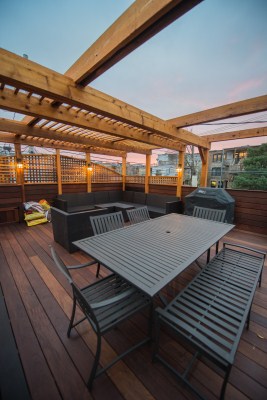Havertown whole house remodel
Some great Pictures of a kitchen and bathroom renovation completed in November 2013. The bathroom was expanded by removing wall and relocating it 2′ over to provide for larger floating vanity and custom bath tub/shower enclosure. Hydronic radiant heat was also used set in wet bed under tile floor.

